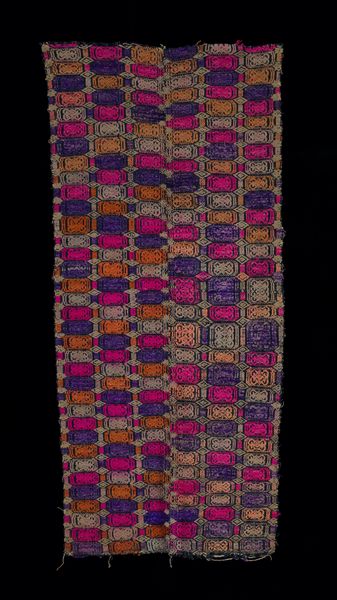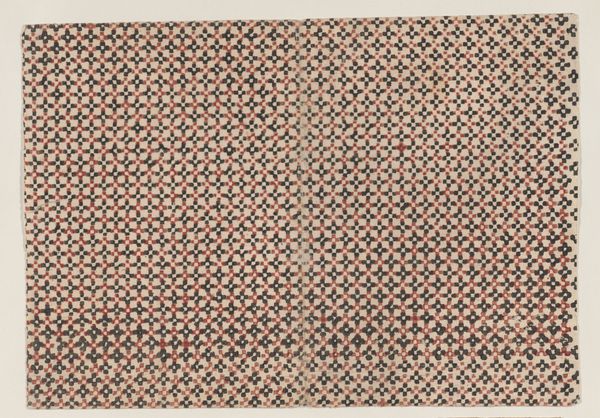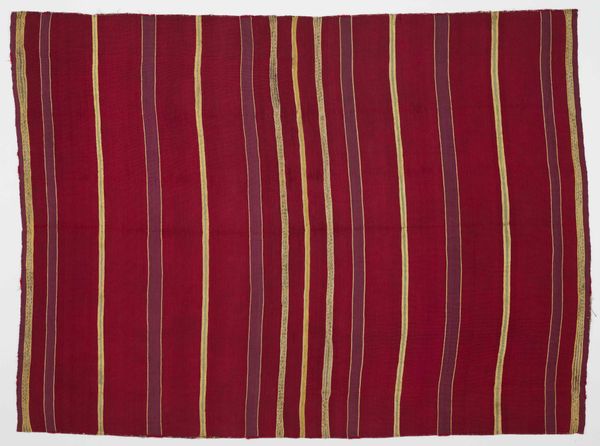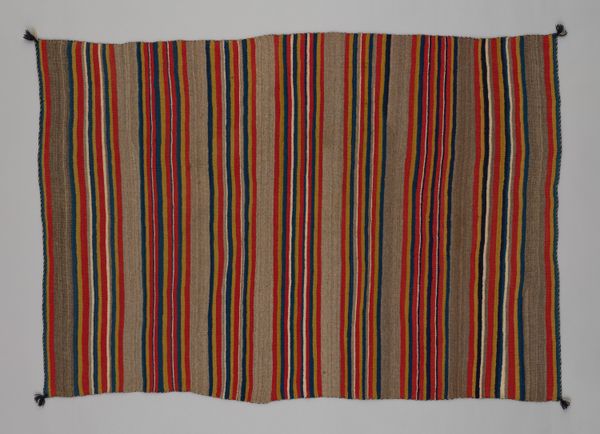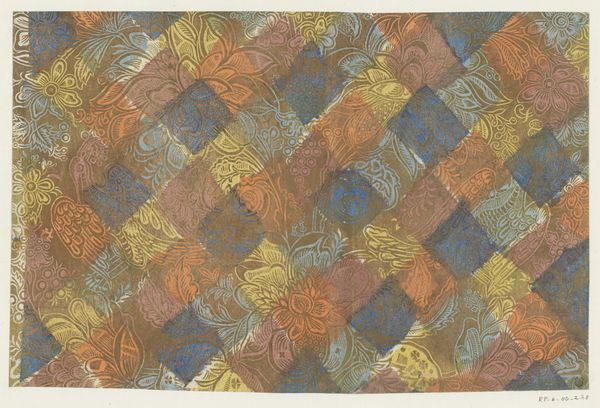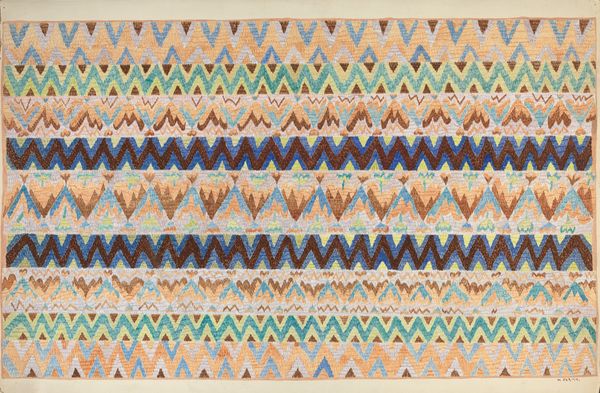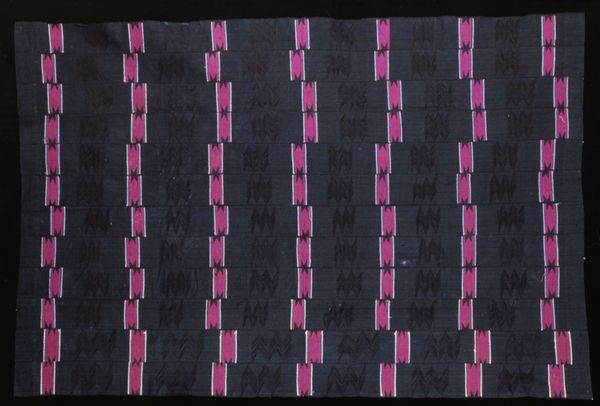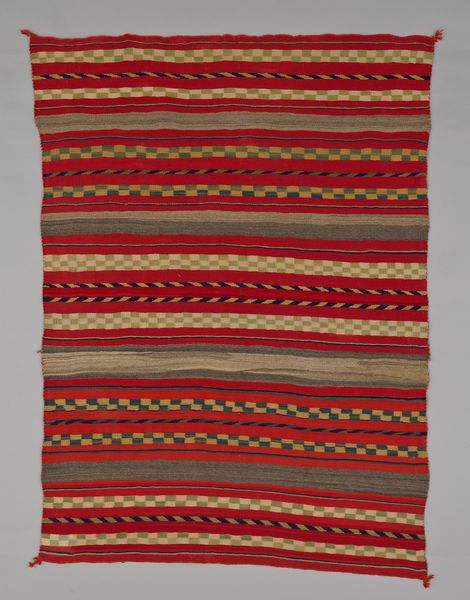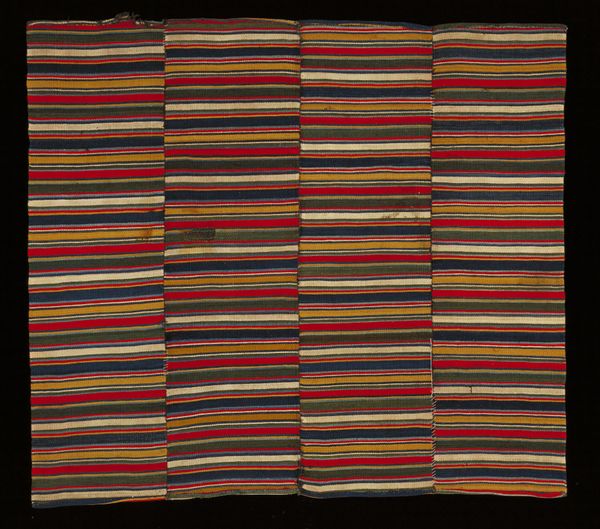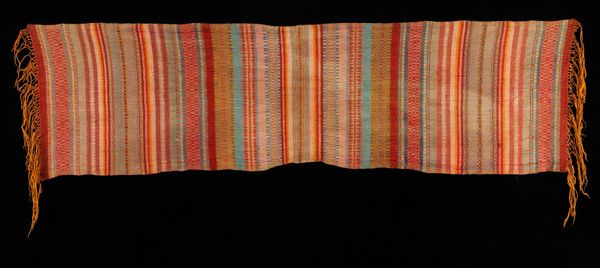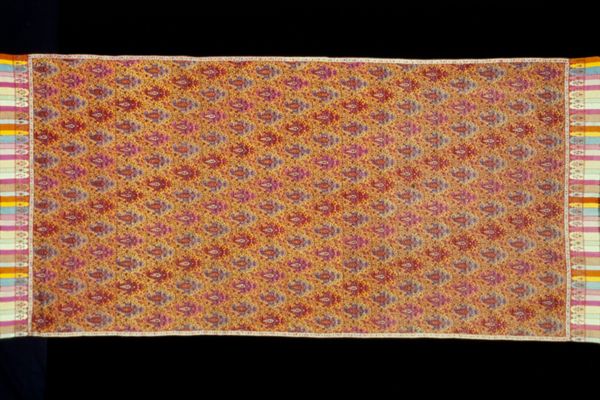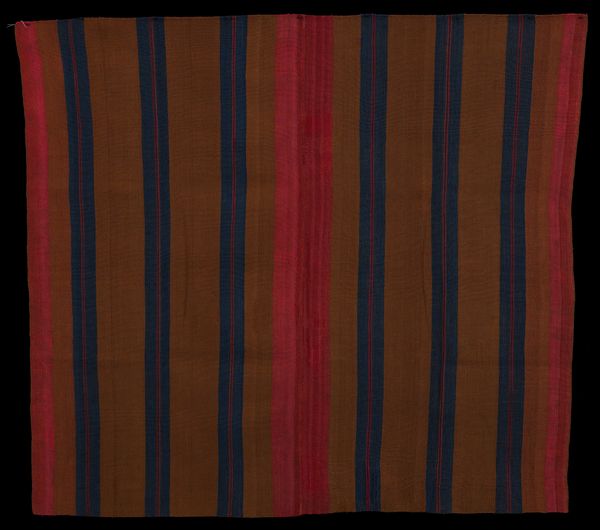
weaving, textile
#
weaving
#
textile
#
geometric
Dimensions: 57 x 25 1/8 in. (144.78 x 63.82 cm)
Copyright: Public Domain
Curator: The blanket here, simply titled "Blanket", comes from the 20th century, with its creation involving weaving cotton textiles. The piece now resides here at the Minneapolis Institute of Art. Editor: The initial impact is striking—the strong vertical lines interplaying with the elaborate, darker patterning create a comforting, grounding presence, almost like a rhythmic visual chant. Curator: Indeed. Blankets have deep cultural significance in various societies, serving practical needs for warmth but often carrying symbolic meaning as markers of identity and status. What’s interesting to consider is the socio-political context in which this functional object becomes 'art.' Editor: Absolutely. Formally, there’s a rich interplay between the broader bands of color and the intricate geometric patterning contained within those bands. It’s almost a figure-ground relationship, where the ground is just as compelling as the figure. The juxtaposition draws the eye in. Curator: Precisely, that contrast highlights a key element often seen in the pattern and decoration movement; using repetitive designs as a powerful means to challenge established artistic hierarchies. There is something really quite bold about suggesting an item for domestic use can have just as much artistic value as painting, or sculpture. Editor: I also notice how the slightly uneven edges and imperfections in the weave add to its unique appeal. It’s a reminder that it’s made by human hands, and the minor inconsistencies only heighten the visual effect of this kind of weaving. Curator: The movement brought forward questions about who gets to define artistic worth, and by using such humble objects it highlighted the politics of taste and the art market's construction of value. The patterns might speak volumes, if one was better versed in weaving’s language in that era. Editor: Thinking about this "Blanket", now I can really appreciate how even in something seemingly commonplace, a deep structural organization exists, and those structures speak to the history of the world in unique visual ways. Curator: And that by seeing the ordinary, we can truly see art's capacity to question our perspectives. That it's about power structures that are baked into our aesthetic criteria and judgment.
Comments
No comments
Be the first to comment and join the conversation on the ultimate creative platform.

